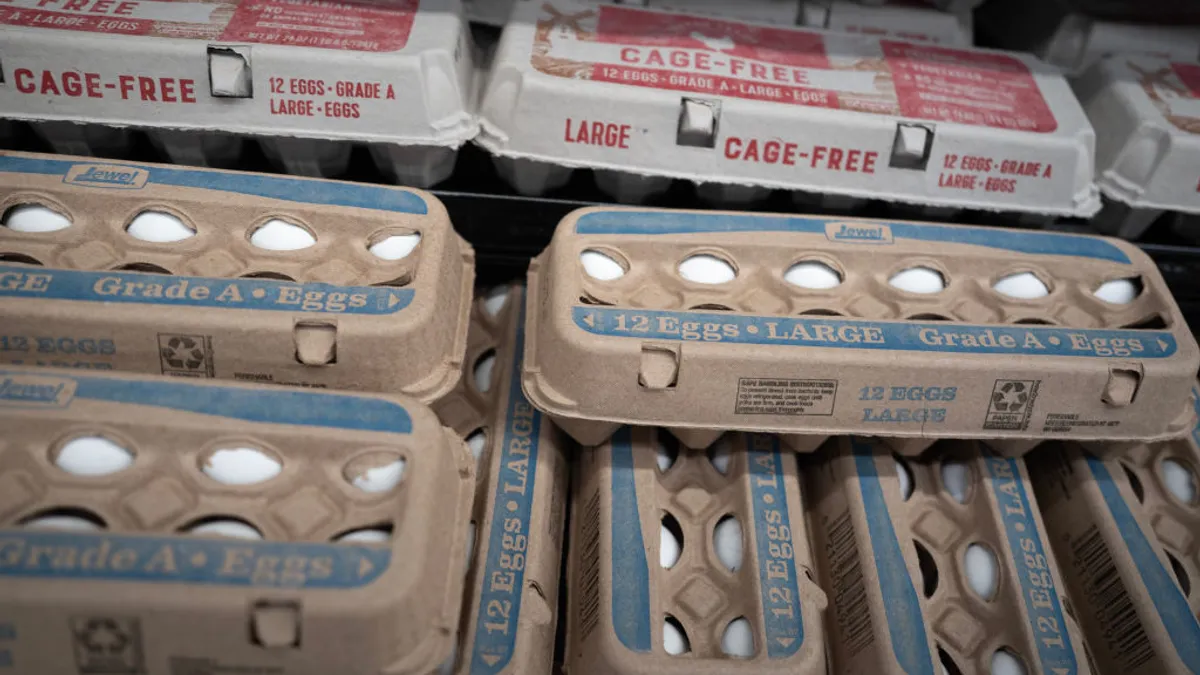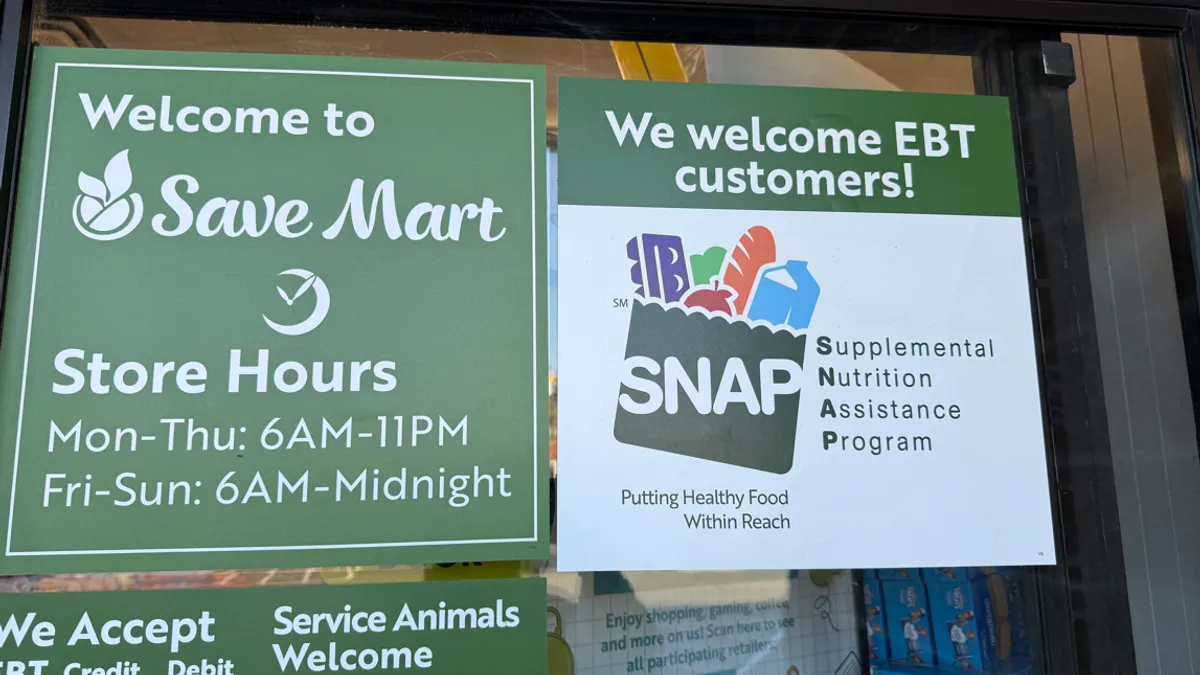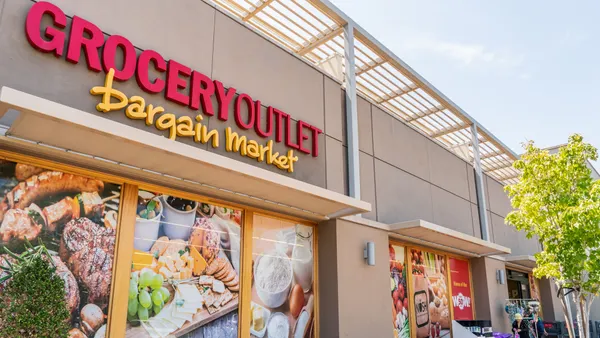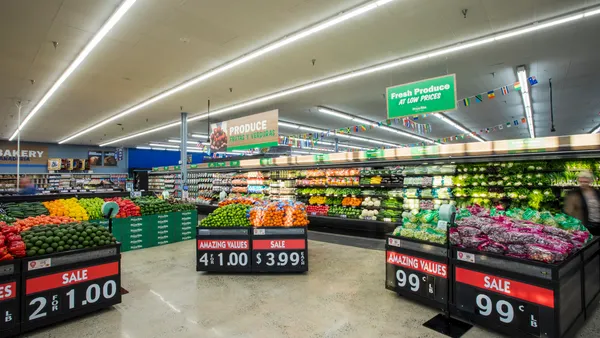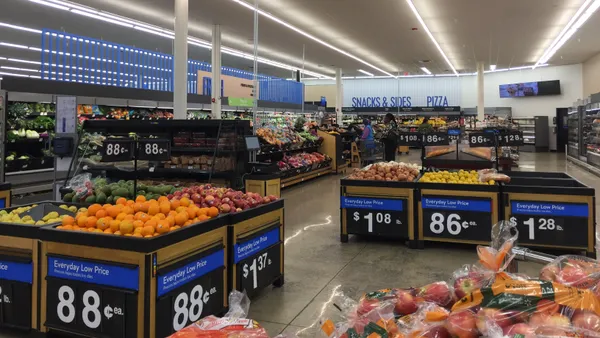Dive Brief:
- Food-at-home prices increased in April at a 2% annual pace, down from 2.4% in March, according to Consumer Price Index data released Tuesday by the U.S. Bureau of Labor Statistics.
- Across-the-board inflation ticked down last month to 2.3%, its lowest rate since February 2021.
- The decline in grocery inflation in April represented the first monthly decline for the figure since October 2024.
Dive Insight:
Even as the unfolding tariff situation sparked concerns that food prices would quickly rise, grocery inflation lost steam last month by the largest amount since the figure dropped by half a percentage point in September 2020 — when food price growth was still tame ahead of the historic surge that kicked off in 2021.
Egg prices continued to play an outsized role in the rate of grocery inflation in April, as a nearly 50% year-over-year increase in the cost of the commodity helped push the BLS index that also includes meats, poultry and fish up at a 7% annual clip. That dynamic could change in the coming weeks, as figures from the USDA released May 9 show that the national average retail price for conventional caged eggs was down by 17% compared with the prior week, to $3.30 per dozen.
Coffee prices also stood out in April, posting an inflation rate of almost 10%. Instant coffee prices rose 13.5%, while the roasted variety came in at just over 9%.
Meat prices also moved ahead last month, with costs for beef and veal leading the way. Uncooked ground beef prices were up in April at a 10% annual rate, while raw steak cost 7% more than it did a year ago.
Pork prices, however, were up by just 1.3% in April, as bacon and related products saw inflation of just under 4% while the category that includes sausage dropped 1.1%. Ham prices moved ahead by 4.3%.
Grocery prices rose at a lower rate in April than during the prior month
Prices for other foods declined in April. Inflation in the fresh fruits and vegetables group dropped by 0.7%, with lettuce and tomato prices both down by over 6%. Dried beans, peas and lentils, however, were up by nearly 6%, underscoring the volatile nature of food prices.
Retailers have been leaning into consumer concerns that grocery prices are primed to go up. For example, Meijer announced Monday that it would temporarily drop prices on more than 70 private label food items.
“Meijer understands customers are looking for value now more than ever before,” Don Sanderson, the Midwestern grocer’s chief merchandising and marketing officer, said in a statement.


